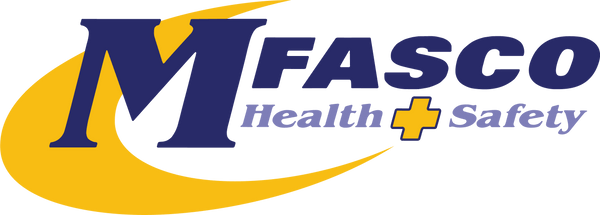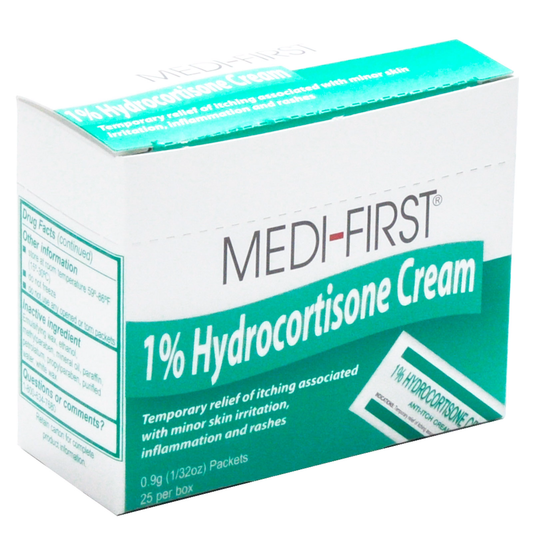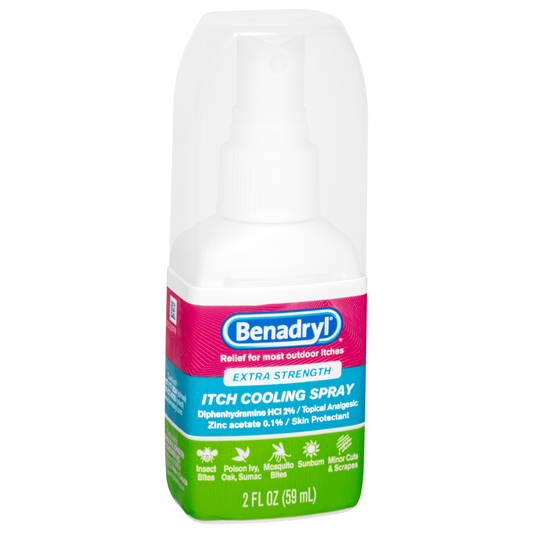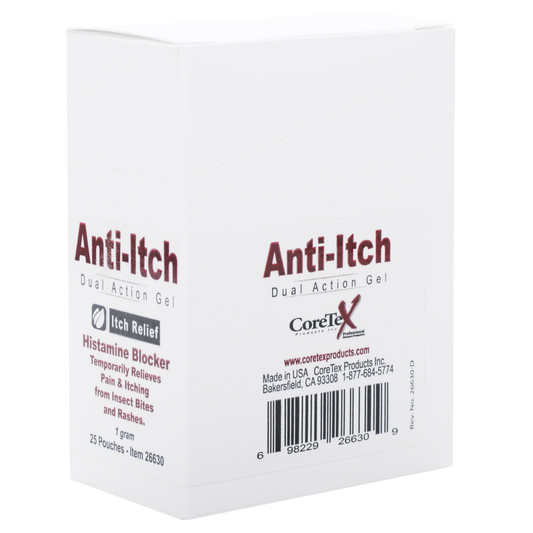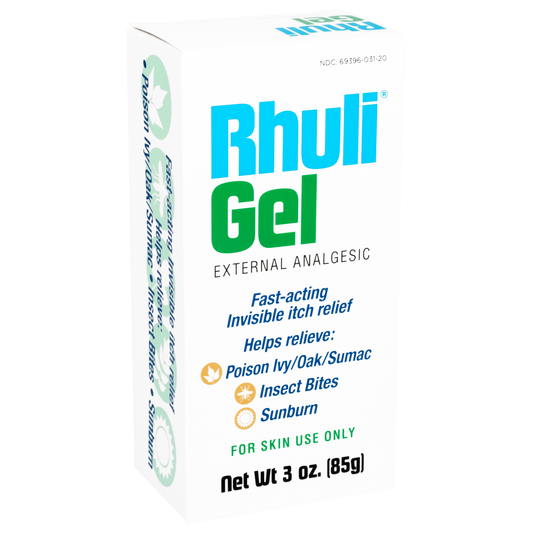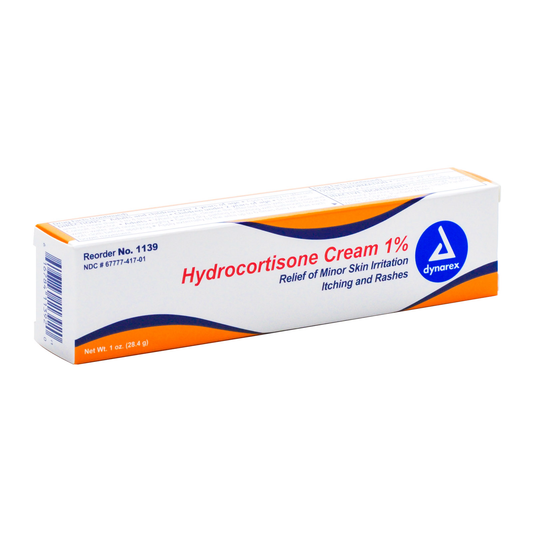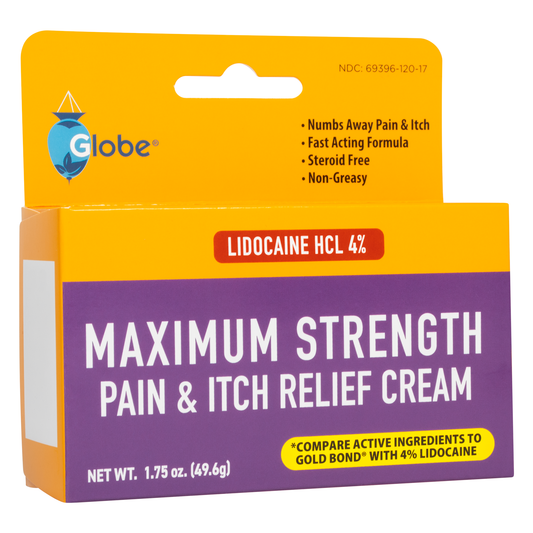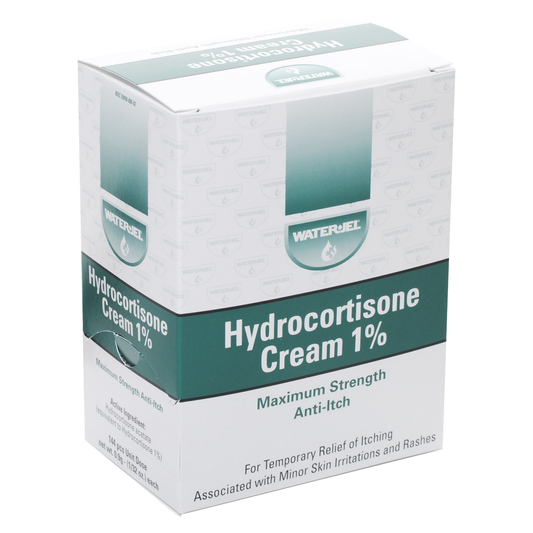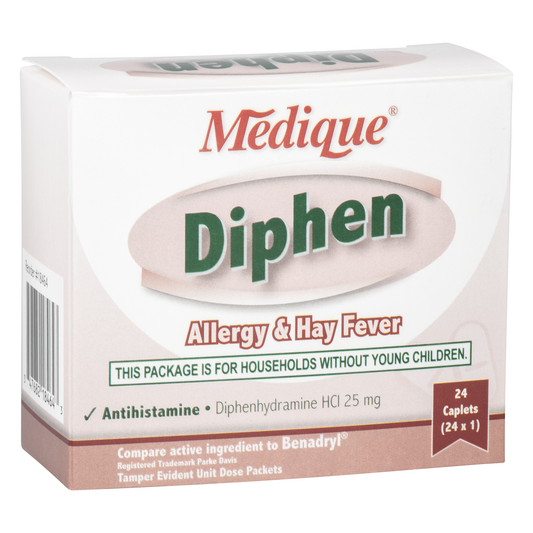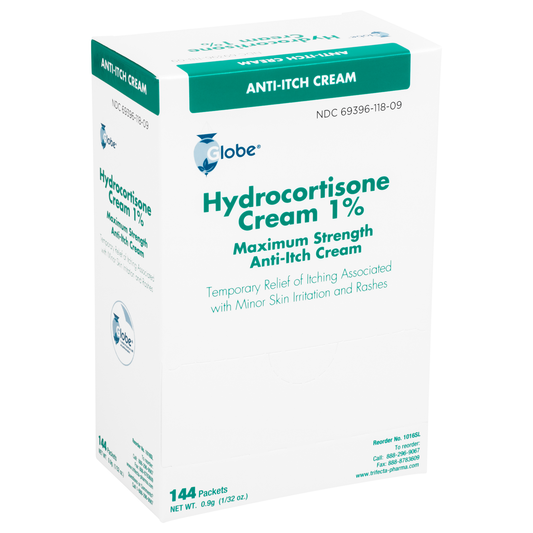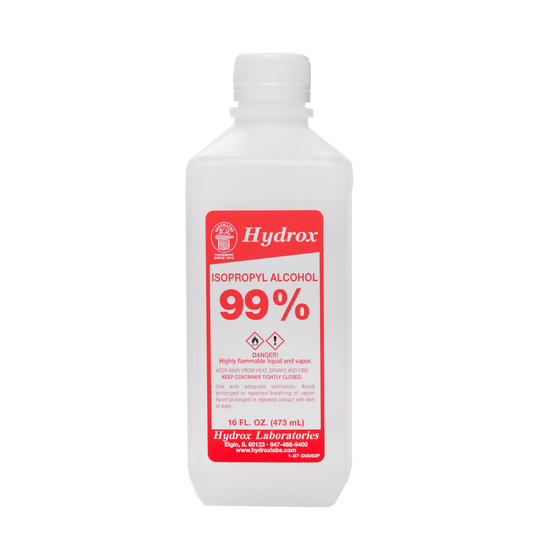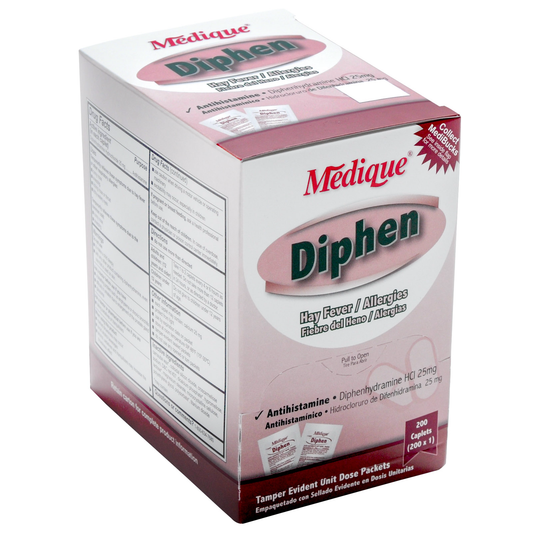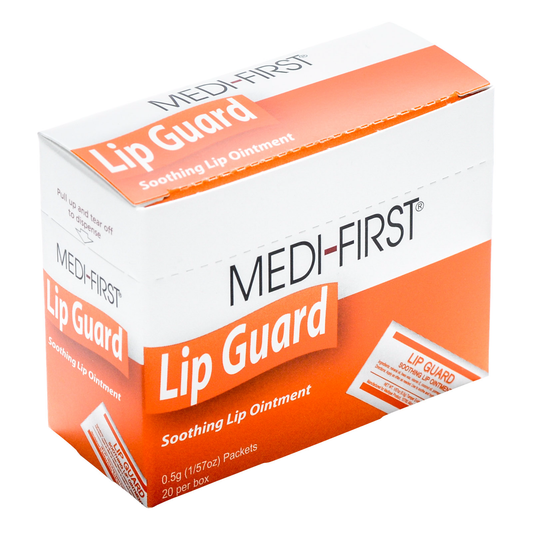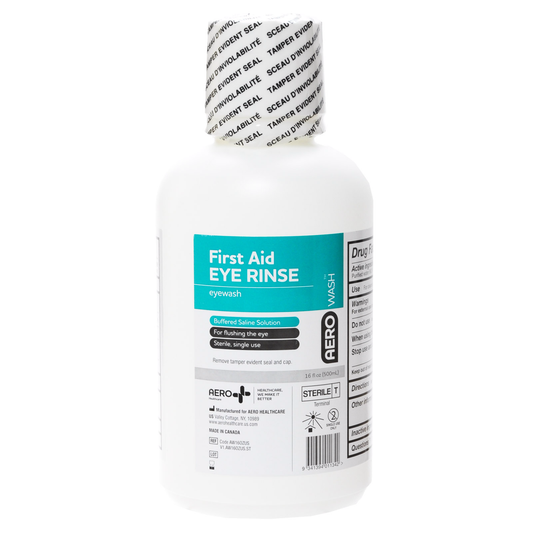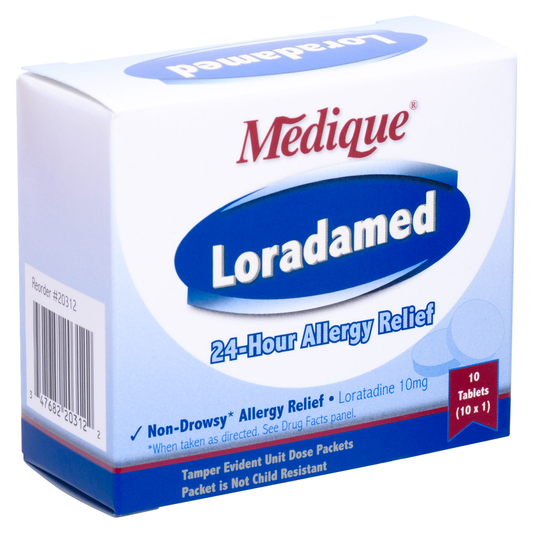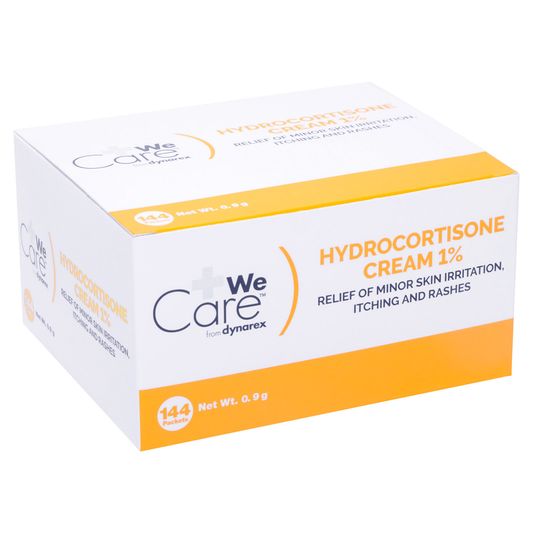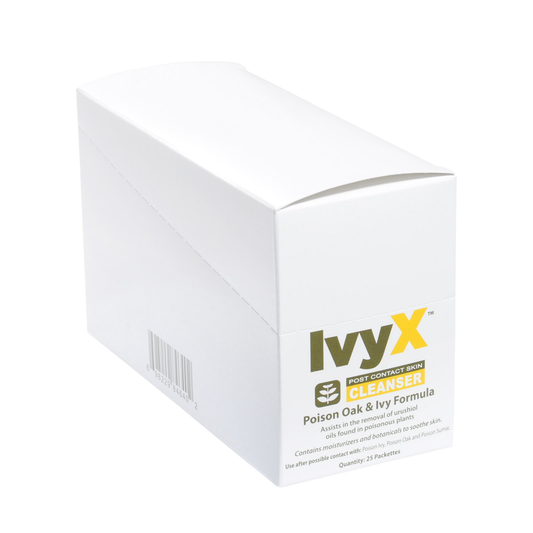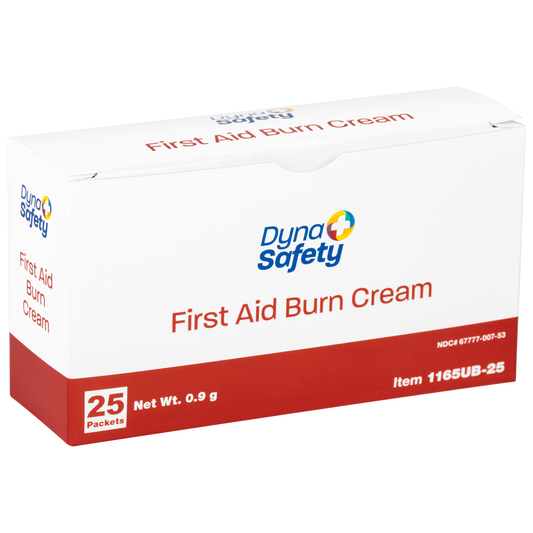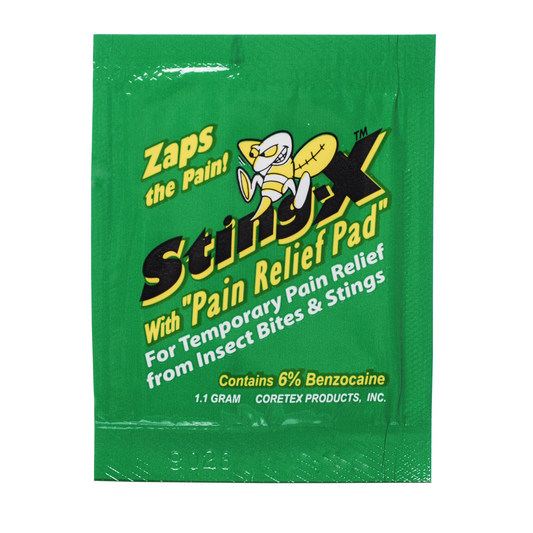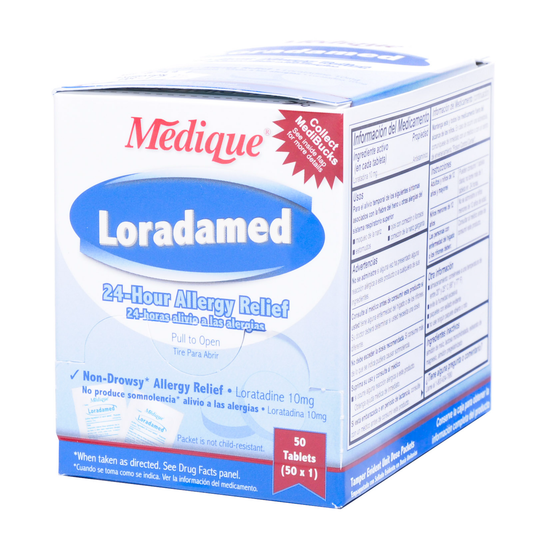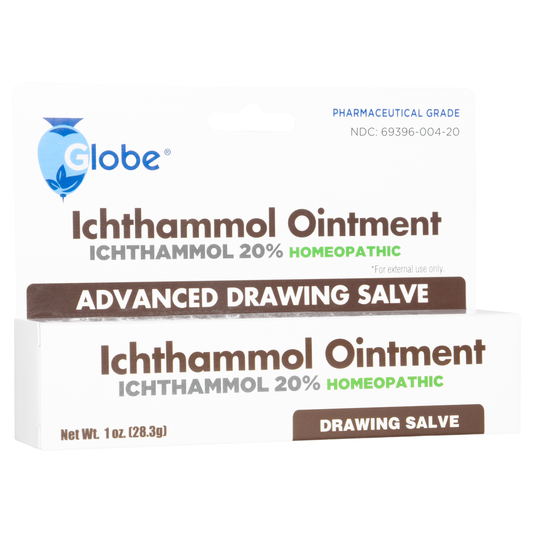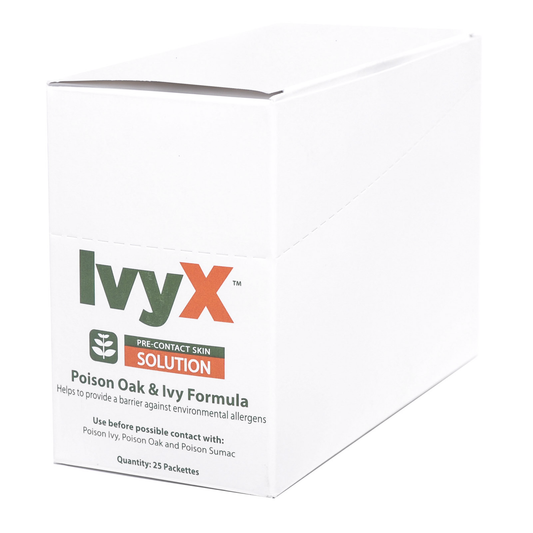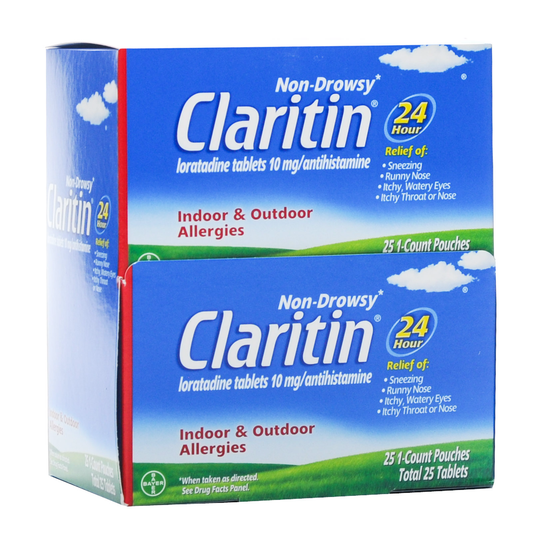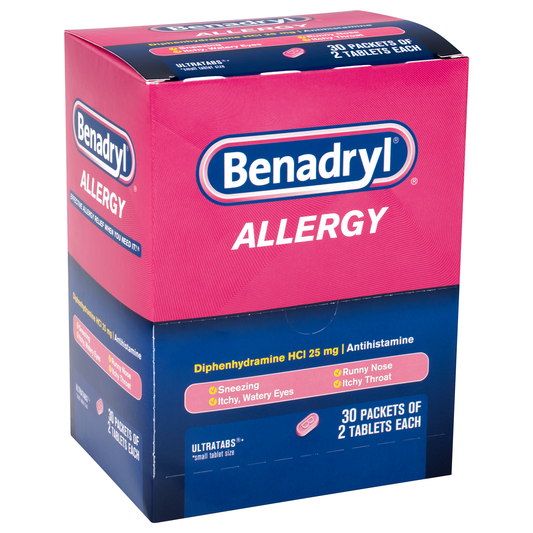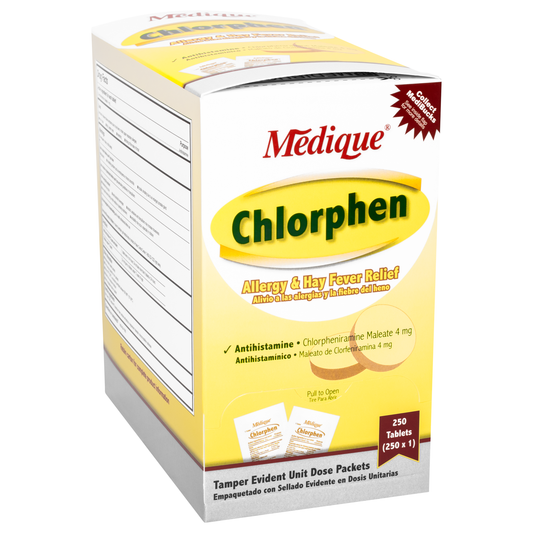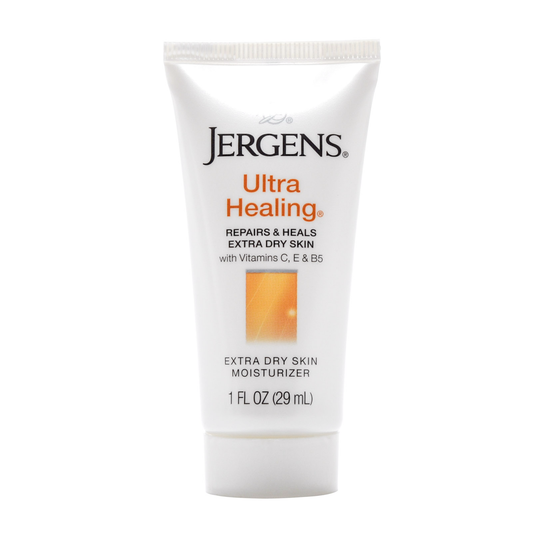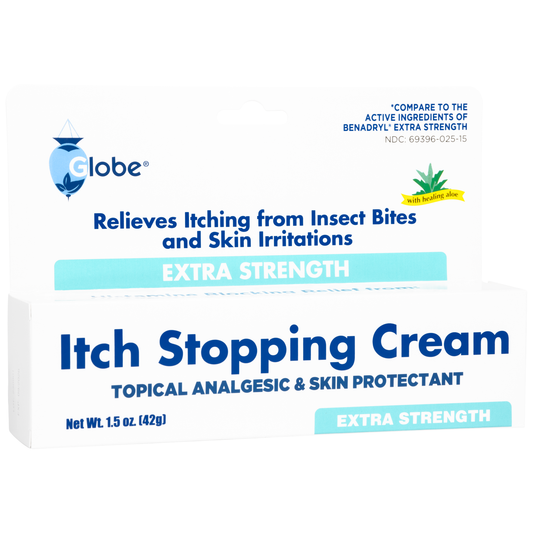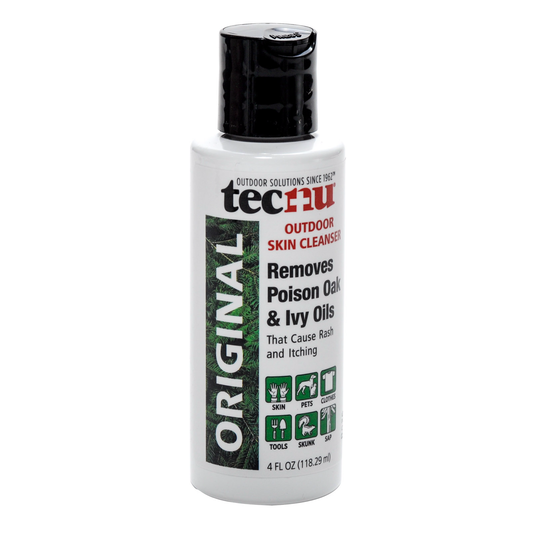Search results
Result found for “itch”
-
Hydrocortisone Cream Anti-itch 25 Pkts/box
Sku: 4073
Out of stockRegular price $5.77Regular priceUnit price per$5.09Sale price $5.77 In stock
In stock
Ships Today
- 1% Hydrocortisone Cream Single Use Packets
- Provides Relief From Itching & Rashes
- Single Packets Make It Easier to Take With You
- Each Package Contains .9 gms of Hydrocortisone
- Dispensing Box Fits Nicely in Wall Mount First Aid Kits
- 25 Packets Per Box
Sale -
New Product
Benadryl Itch Cooling Spray 2 oz
Sku: 2002
Out of stockRegular price $11.30Regular priceUnit price per$13.29Sale price $11.30 In stock
In stock
Ships Today
- Extra Strength Itch Relief
- Topical Analgesic Spray with Diphenhydramine
- Use for Most Outdoor Itches Including Bug Bites
- Non Aerosol Pump Spray
- 2 Oz Pump Spray
Sale -
Anti-itch Gel Unit Dose Individual Use Pouches 25/box
Sku: 6145
Out of stockRegular price $10.40Regular priceUnit price per$12.24Sale price $10.40 In stock
In stock
Ships Today
- Anti-Itch Gel For Itch & Pain Relief
- Contains Diphenhydramine & Zinc
- Anti Itch Gel Unit of Use Pouches
- Each Pouch Contains 1 Gram of Gel
- Packed in A Dispenser Box For Easy Dispensing
Sale -
Antiseptic / Anti Itch Prepack Refill Pack
Sku: 9796
Out of stockRegular price $11.50Regular priceUnit price per$13.53Sale price $11.50 In stock
In stock
Ships Today
- Refill Pack Contain Antiseptic, Burn, Sting & Anti Itch
- Single Use Packets for Easier & More Sanitary Use
- Packaged in a Multi-Pocket Clear Bag
- High-Quality First Aid Kit Refill Supplies
- Use to Restock Emergency and First Aid Bags & Pouches
- Assembled in the USA
Sale -
New Product
Rhuligel Itch Relief 3 oz Tube
Sku: 4104
Out of stockRegular price $10.71Regular priceUnit price per$12.60Sale price $10.71 In stock
In stock
Ships Today
- Fast-Acting Itch Relief
- Use to Relieve Itch from Poison Ivy, Oak & Sumac
- Use on Minor Skin Burns, Cuts and Insect Bites
- Great Additional To Your Outdoor First Aid Supplies
- 3 oz Squeeze Tube
-
Hydrocortisone Anti Itch Cream 1 Oz Tube
Sku: 4070
Out of stockRegular price $2.63Regular priceUnit price per$2.59Sale price $2.63 In stock
In stock
Ships Today
- 1 oz Cream Tube
- 1% Hydrocortisone Creame
- Helps Relieve Itching
- Use For Skin Irritations
- Good For Insect Bites
-
New Product
Lidocaine Pain & Itch Cream 1.75 oz
Sku: 4105
Out of stockRegular price $7.35Regular priceUnit price per$7.20Sale price $7.35 In stock
In stock
Ships Today
- Contains 4% Lidocaine For Superior Pain Relief
- Numbs Away Pain and Itches
- Use for Cuts, Burns, Bites & Sunburn
- Non-Greasy, Steroid Free Formula
- 1.75 oz Squeeze Bottle
-
Hydrocortisone Cream Water-jel Anti-itch 144 Pkts/box
Sku: 4078
Out of stockRegular price $42.88Regular priceUnit price per$50.45Sale price $42.88 In stock
In stock
Ships Today
- Anti-Itch for Rashes, Skin Irritations
- Contains Hydrocortisone Acetate 1%
- Individually Foil Packed, Unit-Dose Packets
- Packets Eliminate Cross-Contamination
- Great for Refilling First Aid Kit Supplies
- 144 Packets Per Box
Sale -
Medique Diphen Commissary Packs 12 Pkts Of 1 Tablet
Sku: 2632
Out of stockRegular price $2.67Regular priceUnit price per$3.14Sale price $2.67 In stock
In stock
Ships Today
- Hay Fever & Allergy Relief Medication
- For Runny Eyes, Nose & Sneezing
- Contains Diphenyhydramine HCl
- Unit Dose Packaging - Each Package Has 1 Pill
- Coated Caplets Make It Easier To Swallow
- 24 Packets of 1 Tablet Per Box
Sale -
Hydrocortisone Cream 1% Packets by Globe (144/Bx)
Sku: 1101
Out of stockRegular price $18.20Regular priceUnit price per$21.41Sale price $18.20 In stock
In stock
Ships Today
- Maximum Strength Anti-Itch Cream Packets
- Relieves Itching from Skin Irritations & Rashes
- Contains 1% Hydrocortisone Cream
- .9 Gm Packets for Individual Dosing
- Dispenser Box Fits in Large Wall Kits
-
Alcohol 99% Isopropyl Pint
Sku: 1315
Out of stockRegular price $5.01Regular priceUnit price per$5.89Sale price $5.01 In stock
In stock
Ships Today
- 99% Isopropyl Alcohol
- Helps Fight Infection of Cuts and Scrapes
- Popular for Computer and Machinery Cleaning
- Soothes Body Aches and Offers Itch Relief
- Removes Adhesive Residue
- Considered Hazardous Material - has Shipping Restrict
Sale -
Medique Diphen Allergy Relief Caplets Industrial Packets 200
Sku: 2645
Out of stockRegular price $16.04Regular priceUnit price per$18.87Sale price $16.04 In stock
In stock
Ships Today
- Compares to Benadryl
- Relieves Allergy Symptoms
- Counteracts Effects of Allergic Reactions
- Unit Dose Packets to Take Anywhere
- 200 Single Use Packages Per Box
- Each Caplet Contains 25 mg Diphenhydramine HCl
Sale -
Lip Guard Lip Ointment Individual Packets 20/box
Sku: 1453
Out of stockRegular price $3.83Regular priceUnit price per$4.51Sale price $3.83 In stock
In stock
Ships Today
- Provides Relief of Pain and Itching Lip Irritations
- Helps Relieve Canker Sores
- Protects and Relieves Chapped Lips
- Individually Dosed Packets
- Dispenser box - Popular First Aid Kit Item
- 20 Packets of .5 gram Ointment Per Box
Sale -
Derma Shield Barrier Cream 5.7 oz Can
Sku: 4187
Out of stockRegular price $30.00Regular priceUnit price per$35.29Sale price $30.00 In stock
In stock
Ships Today
- Creates a Barrier on the Skin
- Non Greasy and Non Toxic
- Protects for up to 5 Hours
- Use in the Shop, Kitchen or Garage
- Contains Moisturizers
Sale -
Eye Wash Solution Aero 16 oz
Sku: 3131
Out of stockRegular price $15.25Regular priceUnit price per$17.94Sale price $15.25 In stock
In stock
Ships Today
- Sterile Buffered Solution for Flushing
- First Aid Eye Rinse
- Fits Most Brand of Eyewash Stations
- More Accurate Eye & Face Flushing
- Use to Refill Eye Wash Stations
-
New Product
Loradamed Allergy Relief Packets (10x1)
Sku: 1290
Out of stockRegular price $3.84Regular priceUnit price per$4.52Sale price $3.84 In stock
In stock
Ships Today
- Single-Dose Packets of Allergy Relief
- Use for Runny Nose, Sneezing Itchy Eyes
- Hay Fever & Seasonal Allergy Relief
- Contains the Same Active Ingredient as Claritin
- Small Commissary Style Packaging for First Aid Kits
- 10 Packets of 1 Tablet per Box
Sale -
Hydrocortisone Cream Packets Dynarex (144/Bx)
Sku: 4114
Out of stockRegular price $21.23Regular priceUnit price per$24.98Sale price $21.23 In stock
In stock
Ships Today
- Single-Use Packets of Anti Itch Cream
- Use on Minor Skin Irritations Like Bites & Rashes
- .9 Gram Cream in Each Packet
- Include in Your First Aid Supplies For Itch Relief
- 144 Unit-Dose Packets Per Box
- Contains 1% Hydrocortisone
Sale -
Lip Guard Packet Each
Sku: K1453
Out of stockRegular price $0.25Regular priceUnit price per$0.29Sale price $0.25 In stock
In stock
Ships Today
- Relieves Lip Pain and Itching
- Also Helps Relieve Pain of Canker Sores
- Protects Chapped Lips
- Individual Use Packets
- Soothing Lip Ointment
- Has a Pleasant Pomegranate Flavor
Sale -
SBS 40 Moisturizing Skin Cream 100 ml Tube
Sku: 5880
Out of stockRegular price $5.98Regular priceUnit price per$7.04Sale price $5.98 In stock
In stock
Ships Today
- Moisturing Cream For Hands
- Medicated Conditioning Hand Cream
- Use on Dry, Chapped Skin to Heal
- Absorbs Quickly into the Skin
- Non-Greasy
- 3.38 Oz Tube
Sale -
Ivy X Poison Oak & Ivy Cleansing Towelette 25/box
Sku: 5824
Out of stockRegular price $21.70Regular priceUnit price per$25.53Sale price $21.70 In stock
In stock
Ships Today
- Poison Oak & Ivy Cleansing Wipes
- Removes Poison Oils From Your Skin
- Individually Wrapped Towelettes
- Professional Oak & Ivy Protection
- Compact Packets Make It Easy to Take With You
- 25 Wipes Per Box
-
First Aid Burn Cream Dynasafety (25/Unit)
Sku: 4015
Out of stockRegular price $2.78Regular priceUnit price per$3.09Sale price $2.78 In stock
In stock
Ships Today
- Pain Relief for Sunburns, Insect Bites, Burns, Cuts
- Helps Reduce Pain and Soothe Itching
- Individual Dose Packets Contain .9 Gm of Cream
- 25 Packets of First Aid Burn Cream Per Unitized Box
- Meets the 2021 ANSI/OSHA Requirement for Burn
- Sold Per Box
Sale -
Insect Sting Relief Pads 10/box
Sku: 7960
Out of stockRegular price $1.93Regular priceUnit price per$2.27Sale price $1.93 In stock
In stock
Ships Today
- Unit Size Box of Sting Wipes
- Contains 10 Individually Packed Sting Wipes
- Box Dimensions 4" 2.25 x 3/4"
- Fits in Vehicle or Wall-Mount First Aid Kits
- Sting Wipes Contain Benzocaine & Alcohol
- Use for Bug Bites & Stings
Sale -
Sting X Insect Sting Relief Pad Each
Sku: 5796
Out of stockRegular price $0.48Regular priceUnit price per$0.56Sale price $0.48 In stock
In stock
Ships Today
- Use To Reduce Pain From Stings & Bites
- Contains Benzocaine To Stop Pain Fast
- Each Pad is Individually Packed
- Easy To Tear Open Packs
- Add To Outdoor & Sports First Aid Kits
Sale -
Diphen Tablet Packet Each
Sku: K2645
Out of stockRegular price $0.23Regular priceUnit price per$0.27Sale price $0.23 In stock
In stock
Ships Today
- Hay Fever & Allergy Relief Tablets
- Packed In Unit-Dose Foil Packets
- May Cause Drowsiness
- Contains Same Active Ingredient in Benadryl
- Easy-To-Swallow Caplets
Sale -
Medique Loradamed Allergy Relief 50x1
Sku: 1380
Out of stockRegular price $25.31Regular priceUnit price per$29.78Sale price $25.31 In stock
In stock
Ships Today
- Same Ingredients as Claritin
- 24 Hour Allergy Relief
- Relieves Hay Fever and Respiratory Allergies
- Contains 10 mg Loratadine
- 50 Packs Per Box
- 1 Tablet Per Pack
Sale -
New ProductSale
Ichthammol Ointment 20% 1 oz Tube
Sku: 4102
Out of stockRegular price $8.99Regular priceUnit price per$14.16Sale price $8.99 In stock
In stock
Ships Today
- Homeopathic Advanced Drawing Salve
- Helps Skin Irritations & Soothes Skin
- Draws Foreign Objects to the Surface of the Skin
- Helps Remove Splinters and Slivers
- Contains Ichthammol 20%
- 1 oz Tube
Sale -
Ivy X Pre-Contact Poison Ivy Wipes Coretex (25/Bx)
Sku: 5823
Out of stockRegular price $23.10Regular priceUnit price per$27.17Sale price $23.10 In stock
In stock
Ships Today
- Pre-Contact Poison Oak & Ivy Wipe
- Water & Sweat Resistant
- Leaves An Invisible Protection Barrier On Skin
- Washes Off Easily With Soap & Water
- 25 Individually Wrapped Wipes
- Dispensing Box
Sale -
Claritin Allergy Tablet Packets (25pks/1)
Sku: 1246
Out of stockRegular price $63.74Regular priceUnit price per$74.99Sale price $63.74 In stock
In stock
Ships Today
- No-Drowsy Allergy Relief
- One Dose Provides All Day Relief
- Individual Dose Packets
- Relieve Sneezing, Itching, Watery Eyes
- Contains the Antihistamine Loratadine
Sale -
New Product
Benadryl Unit Dose (60/Bx)
Sku: 2012
Out of stockRegular price $17.74Regular priceUnit price per$20.87Sale price $17.74 In stock
In stock
Ships Today
- Most Popular Brand Of Allergy Relief Medication
- Use for Sneezing, Itchy, Runny Noses
- Contains Diphenhydramine HCL
- On-the-Go Packets for Convenience
- 2 Tablets per Dose Packets
- 30 Packets per Dispensing Box For Tabletops
-
New Product
Chlorphen Allergy Relief 250x1
Sku: 2033
Out of stockRegular price $18.85Regular priceUnit price per$22.18Sale price $18.85 In stock
In stock
Ships Today
- Allergy & Hay Fever Relief Medication
- Relief from Runny Nose, Itchy Watery Eyes & Sneezing
- Contains Chlopheniramine Maleate 4 mg
- May Cause Drowsiness
- Packed in Single-Dose Packets for Easier Dispensing
- 250 Packets of 1 Tablet Per Dispensing Box
-
Jergens Ultra Healing Skin Cream 1 oz
Sku: 6357
Out of stockRegular price $1.63Regular priceUnit price per$1.92Sale price $1.63 In stock
In stock
Ships Today
- Personal Size Hand Cream
- Ultra Healing Skin Lotion
- For Visibly Healthier Skin
- Great for Employee Giveaways
Sale -
New Product
Itch Stopping Cream with Aloe 1.5 oz
Sku: 5100
Out of stockRegular price $2.62Regular priceUnit price per$3.08Sale price $2.62 Out of stock
Out of stock
- Relieves Pain & Itch from Bites, Burns Cuts, Rashes
- Helps Dry the Oozing of Poison Oak, Ivy & Sumac
- Extra Strength Topical Analgesic & Protectant
- Contains Healing Aloe Vera
- 1.5 oz Tube
Out of stock -
Tecnu Poison Oak And Ivy Treatment 4 Oz
Sku: 5855
Out of stockRegular price $6.93Regular priceUnit price per Out of stock
Out of stock
Out of stock
Out of stock
